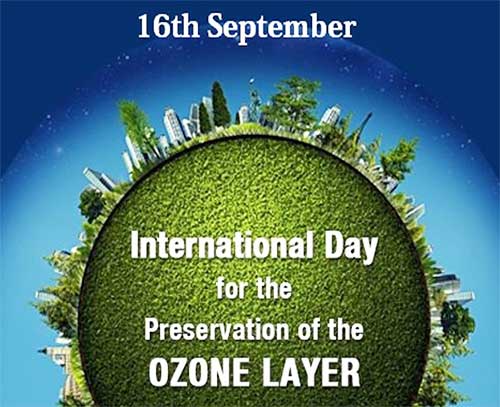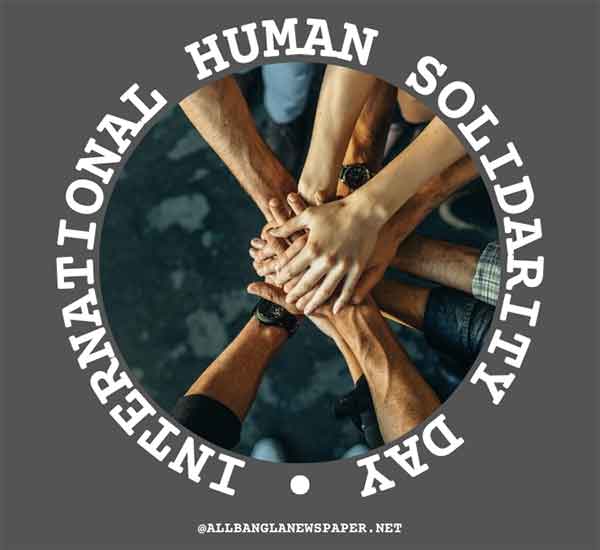
The International Day for the Preservation of the Ozone Layer, observed every year on September 16, serves as a reminder of the vital role of the ozone layer in protecting life on Earth. The day commemorates the signing of the Montreal Protocol on Substances that Deplete the Ozone Layer in 1987, a landmark agreement that continues to contribute significantly to environmental protection.
The Importance of the Ozone Layer
The ozone layer is a fragile shield of gas located in the Earth's stratosphere, approximately 15 to 30 kilometers above the Earth's surface. It absorbs most of the Sun's harmful ultraviolet (UV) radiation, particularly the highly energetic UV-B and UV-C rays, which can cause significant damage to living organisms. Without the ozone layer's protective effect, life on Earth would be exposed to increased levels of UV radiation, leading to a dramatic rise in skin cancer, cataracts, and immune system deficiencies in humans, as well as severe damage to ecosystems, plants, and marine life.
The Discovery of Ozone Depletion
In the mid-20th century, scientists observed a troubling decline in ozone concentration over the Antarctic, now commonly referred to as the ozone hole. The discovery, made by British scientists in 1985, shocked the world and confirmed the damaging effects of human-made chemicals, particularly chlorofluorocarbons (CFCs), on the ozone layer. CFCs, widely used in refrigeration, air conditioning, and aerosol products, were identified as the main culprits in depleting ozone molecules by breaking down the ozone (O₃) into oxygen (O₂).
The Montreal Protocol: A Global Solution
The discovery of the ozone hole spurred the international community to take swift action. The result was the Montreal Protocol, signed on September 16, 1987, by 46 countries. The treaty aimed to phase out the production and consumption of ozone-depleting substances (ODS), including CFCs, halons, and other chemicals. The Montreal Protocol has been hailed as one of the most successful environmental agreements in history due to its universal ratification and measurable impact. Since its adoption, the levels of ODS in the atmosphere have been significantly reduced, leading to a gradual ozone layer recovery.
The Current State of the Ozone Layer
Thanks to the collective efforts of countries worldwide, the ozone layer is on a path to recovery. According to the World Meteorological Organization (WMO), the Antarctic ozone hole has been slowly shrinking, and the ozone layer could return to pre-1980 levels by the middle of the 21st century. This recovery highlights the effectiveness of global collaboration in addressing environmental crises. However, the continued use of some ODS alternatives, such as hydrofluorocarbons (HFCs), which are potent greenhouse gases, poses new challenges, particularly to climate change.
Why International Ozone Day Matters
The International Day for the Preservation of the Ozone Layer is a vital occasion to reflect on the progress made in protecting the environment and the ongoing challenges. It serves as a reminder that global environmental issues require coordinated efforts, international cooperation, and long-term commitment. The ozone layer's preservation is crucial for human health and maintaining the delicate balance of Earth's ecosystems.
Educational Awareness and Actions
This annual observance also promotes educational programs, public awareness campaigns, and scientific research to deepen our understanding of the ozone layer and how best to preserve it. Schools, environmental organizations, and governments around the world hold events, seminars, and outreach activities to inform the public about the significance of the ozone layer and the steps individuals and industries can take to minimize ozone depletion.
Actions to Protect the Ozone Layer
While much progress has been made, the fight to protect the ozone layer is far from over. Governments, industries, and individuals must continue to take concrete actions to safeguard this vital shield. Some key actions include:
Avoiding Products Containing Ozone-Depleting Substances: Consumers can reduce their impact by preventing the use of products that contain ODS, such as certain refrigeration equipment and aerosol sprays that still use harmful chemicals.
Proper Disposal of Refrigeration and Air Conditioning Equipment: Old refrigeration units and air conditioners often contain CFCs or other ODS. Correct disposal and recycling of these appliances help prevent the release of these harmful substances into the atmosphere.
Supporting Environmental Policies: Advocating for and supporting national and international policies that promote the reduction of ODS is crucial. Policymakers must also ensure that alternative chemicals, such as contributing to global warming, do not negatively affect the environment.
Educating Future Generations: Raising awareness among younger generations about the importance of ozone protection is essential to ensure the continued preservation of the ozone layer. This can be achieved through school programs, community projects, and hands-on activities.
The Link Between Ozone Layer Protection and Climate Change
As we continue to address ozone depletion, it is also important to consider its links to climate change. Many substances that deplete the ozone layer are also potent greenhouse gases, contributing to the warming of the planet. The Kigali Amendment to the Montreal Protocol, adopted in 2016, aims to phase down HFCs, which, while they do not directly harm the ozone layer, have a strong climate-warming effect. By addressing both ozone depletion and climate change through international agreements, we can make significant strides in protecting the planet for future generations.
Looking Ahead: A Sustainable Future
The success of the Montreal Protocol is a testament to what can be achieved when the global community unites to tackle a common environmental threat. As we look to the future, we must continue to monitor the health of the ozone layer and take proactive measures to protect it. This includes adopting sustainable technologies, transitioning away from harmful chemicals, and fostering greater international cooperation.
The International Day for the Preservation of the Ozone Layer reminds us that we have the power to effect change, not just for the ozone layer, but for the broader environment as well. It is a call to action for continued vigilance, innovation, and commitment to safeguarding our planet.
#International_Day_for_the_Preservation_of_the_Ozone_Layer #Ozone_Layer #UV_Radiation





